5080 SQFT | Coonoor
2022
PAUL ABRAHAM & PAVITRA RAJARAM
5080 SQFT | Coonoor
2022
PAUL ABRAHAM & PAVITRA RAJARAM
“Part quaint hill-station home and part charming old English club, drenched in the colours and patterns that define India.”
Among the oldest of Coonoor’s hill-station bungalows, Nenagh wears its history lightly. A delightful conservatory settles in the lap of its 100-year-old fig tree; a cool wash of aquamarine bathes the original tin roof; inside the sunroom, morning light warms the old marble chequerboard floor. Art and nature gambol playfully through this restored home in the Nilgiris.

Floor to ceiling windows envelop both the corridor that runs the length of the house and the sun room beyond. A vintage Goan church bench sits on the restored marble checkerboard flooring. The original roof is painted a soft aquamarine to bring the sky in.
A handsome colonial-era bungalow on Gray’s Hill in Coonoor, Nenagh is over 115 years old and came with a storied past of its own. It is named for an old fort town in Ireland and part of the built heritage of this hill-station in the shola forests of the Nilgiris. Since 2021, Nenagh has been sensitively restored to preserve its original character, and offer a space where more personal histories can take root and flower. It is a living repository of the Rajaram-Abraham family’s childhood memories, lifelong passions and favourite dinner party stories.
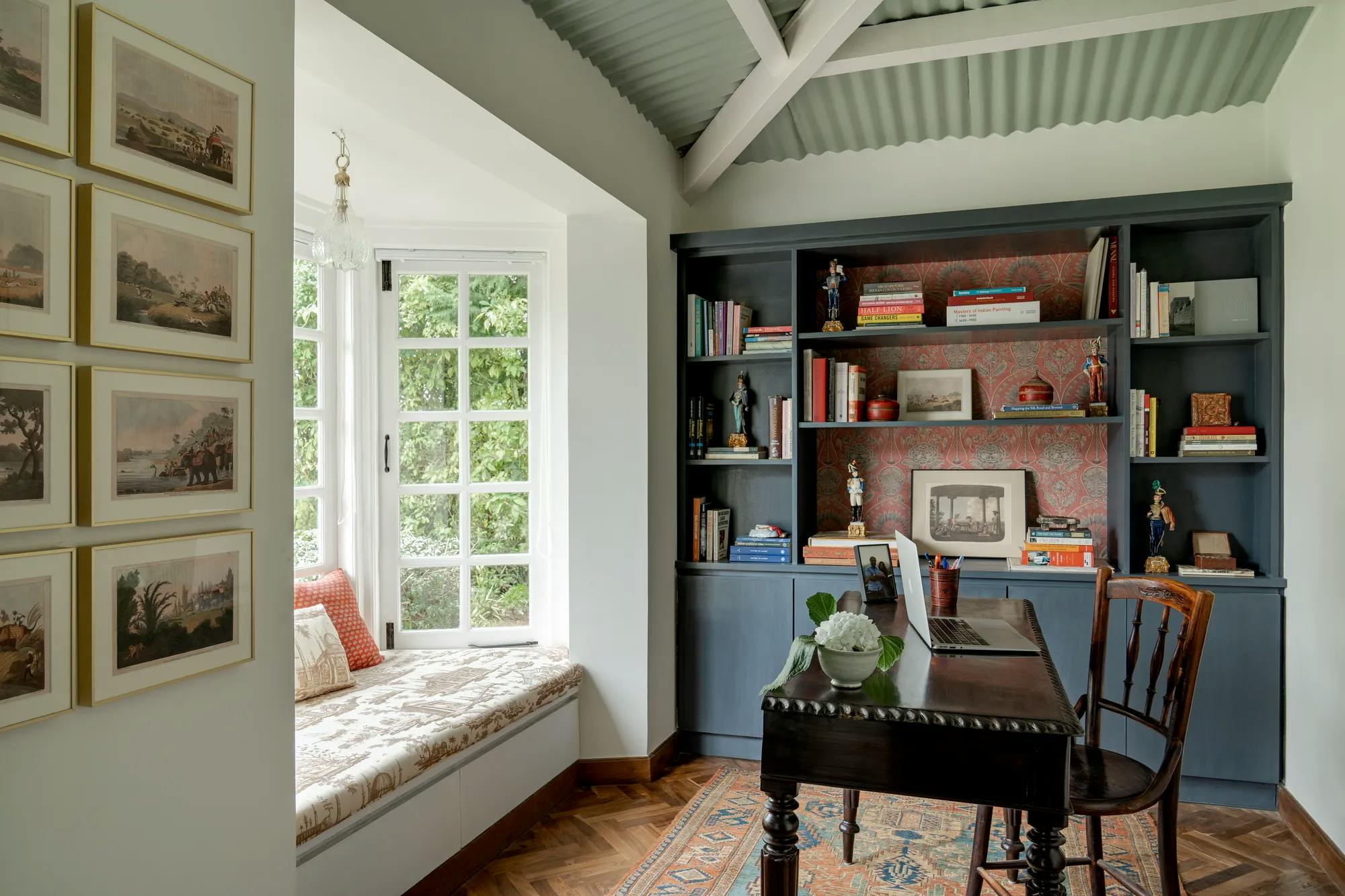
The private study at the end of the corridor has a bay window that overlooks the garden. 19th century lithographs, a vintage uzbek carpet and an old rosewood table are offset by the custom built bookshelves lined with wallpaper from Sabyasachi x Nilaya by Asian Paints produced by PRD
Nenagh was renovated to be respectful of its architectural lineage, as well as its ecological reality and regional terroir. The original, immaculate bones of bungalow still shine through in the perfect symmetry of the tin roof covered in baked Mangalore tiles, the elegant lines of the fireplaces, and the 300-year-old woodland tree in the garden, which is also the ancestral habitat of a family of Indian Crested Porcupines. Other classic 19th-century elements preserved include the airy wrap-around verandah, the checkerboard marble floor and the scalloped wooden eaves.

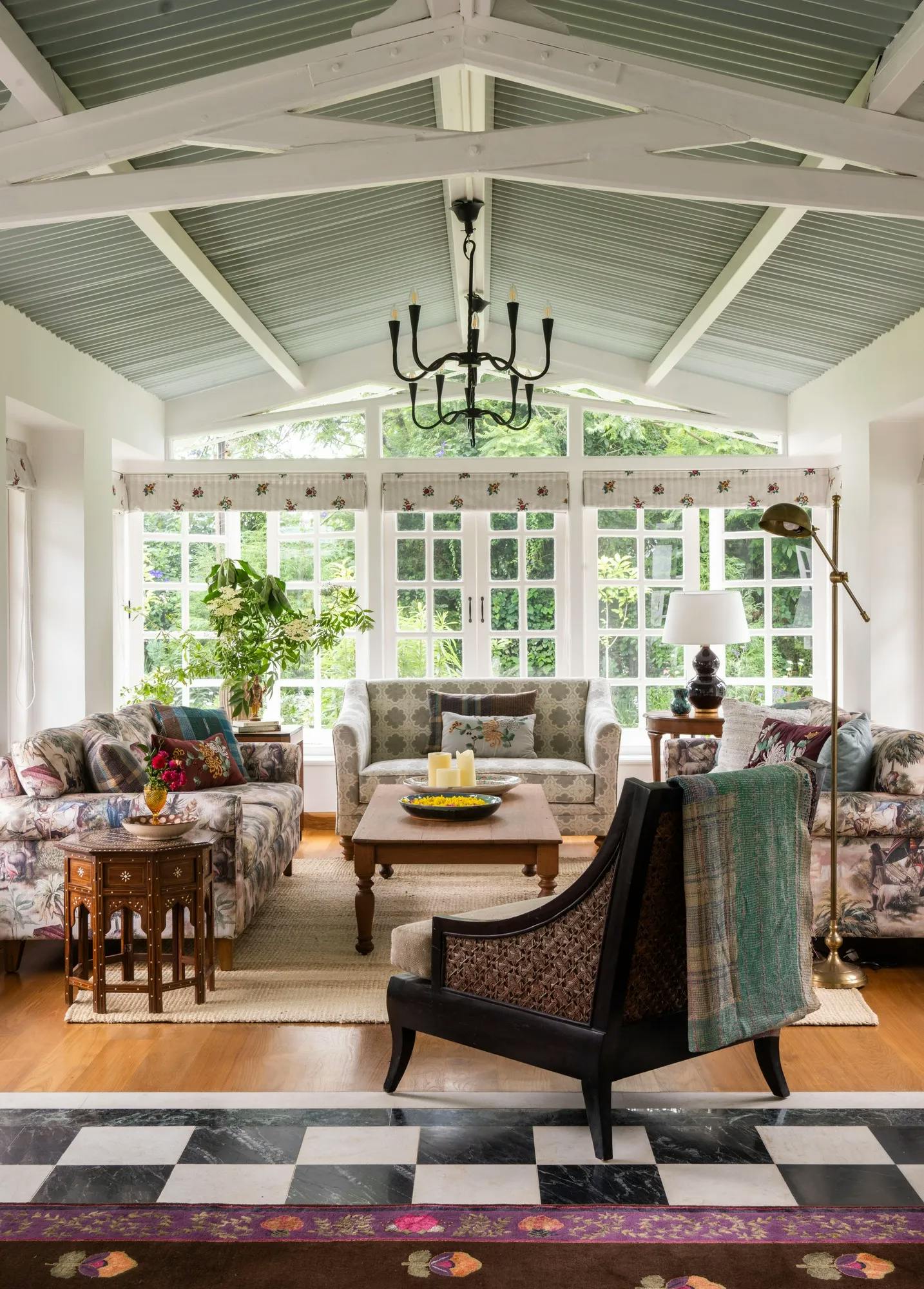
The mud room of the house with its stark black basalt flooring is offset with a jute rug, and other quirky finds including the ceramic boot umbrella stand from Portugal, the printed toile on the bench and an original lithograph of Coonoor from the 1800’s above the custom made console.
The sun room is an extension of the corridor and brings in light with endless views of the garden. The comfortable sofas are custom upholstered in craft textiles with bespoke metal cast chandeliers to complete the look. In the foreground is the Sipahi carpet from Majnun the PRD x JR collection
Nenagh has also acquired new creature comforts in the form of a mudroom at the entrance, a sunroom that’s a bird-watcher’s paradise, a study and that overlooks the garden and a private sit-out for the master bedroom, perfect for moonlit conversations. The garden is sweet with the fragrance of nostalgia. From the Regency-era rose garden to the heady tropical bloom of the magnolia tree to the colourful profusion of flowers straight out of a Mughal bagh, every part of it holds a special memory.

The piece de resistance of the home is a glass roof conservatory nestled under the overhang of a 200 year old fig tree that is the formal dining room. A 19th century Indo-dutch rosewood table with carved legs is flanked by custom chandeliers.
The restoration has been mindful not only of Nenagh’s past but also of its ability to flourish in the years to come. It has created sustainable systems that harvest rainwater, protect bio-diversity and optimise the natural advantages of the home, like its abundance of soft sunlight and crisp mountain air. These last two are now invited into the home more generously through bay windows, skylights and–the pièce de résistance — the glass roof of the jewel-like conservatory alight with the glow of Indian glass paintings.
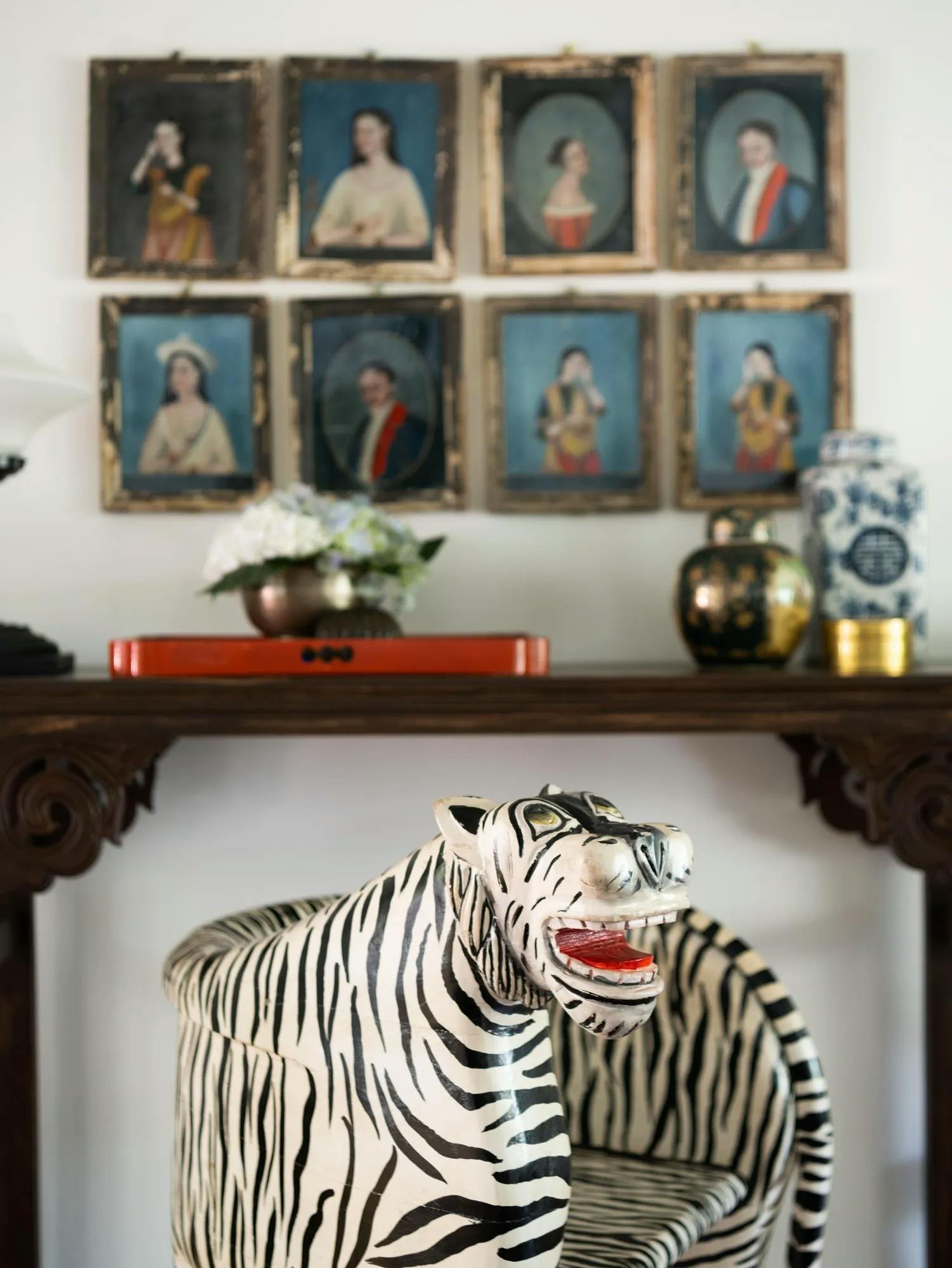

A series of reverse glass paintings made in China for the Indian market is paired with an opium table and a hand painted striped tiger chair from Rajasthan.
An intimate bedroom area was created by tucking a custom made bed under the nook created by the sloping roof. A custom designed wallpaper from the PRD studio is set off by a chinoiserie inspired lacquered lattice screen. The headboard is upholstered in a silk mashru fabric hand woven in french style ticking stripes.
Nenagh provides a sun-warmed canvas for the layers of art stories told throughout the bungalow. Textiles narrate the most meaningful journeys on which they were collected, from the hand-woven mashrus to the Christopher Moore cotton toiles to the Uzbeki silk ikats. Old aquatints, rare maps, archival photography and vintage water-colour botanical illustrations speak to an abiding fascination with Indian history. The art weaves many more threads into the conversation with Persian miniatures, Bhil tribal art, Andhra leather puppets and a panoply of contemporary artists, like Rithika Merchant, V Ramesh and Varunika Saraf.
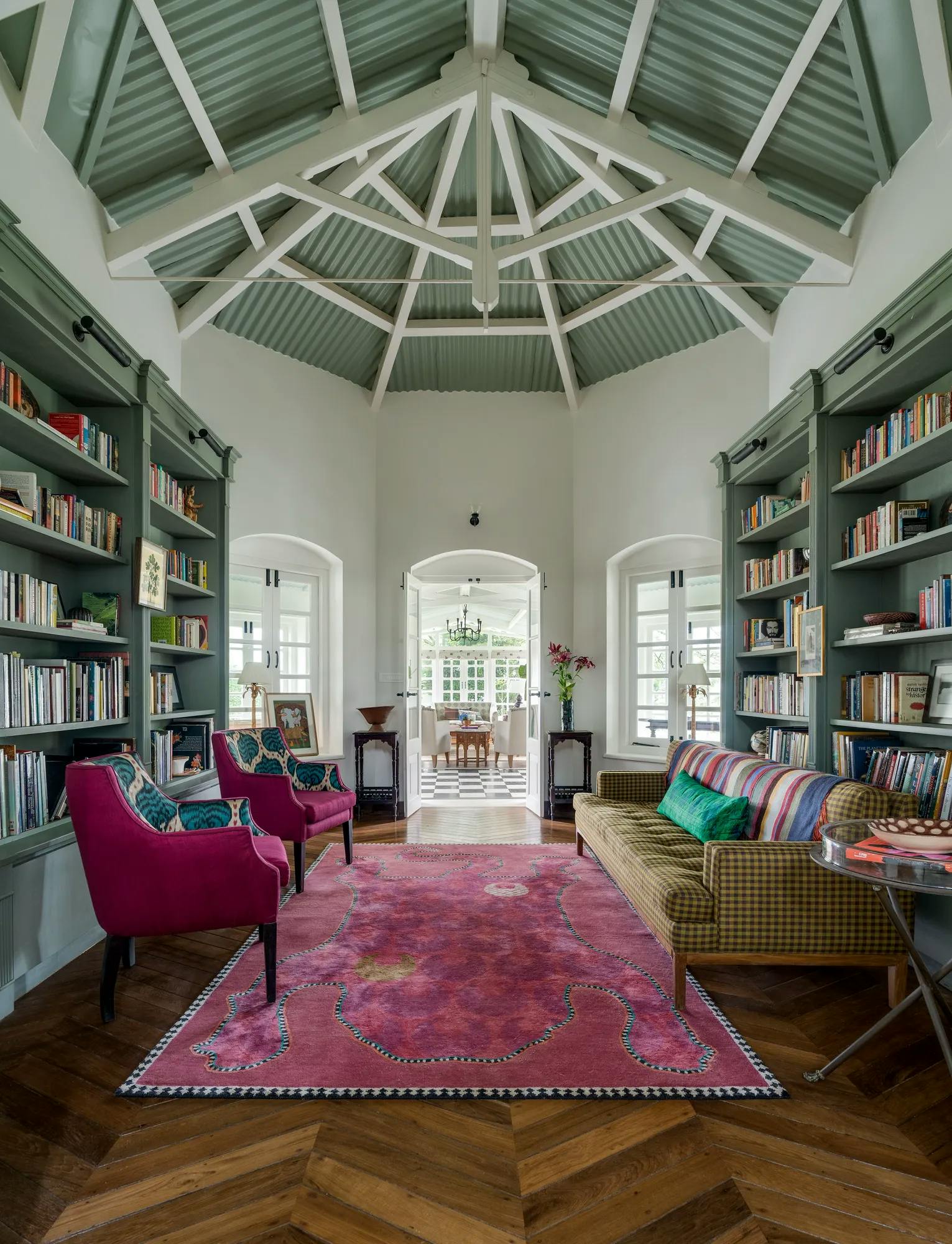
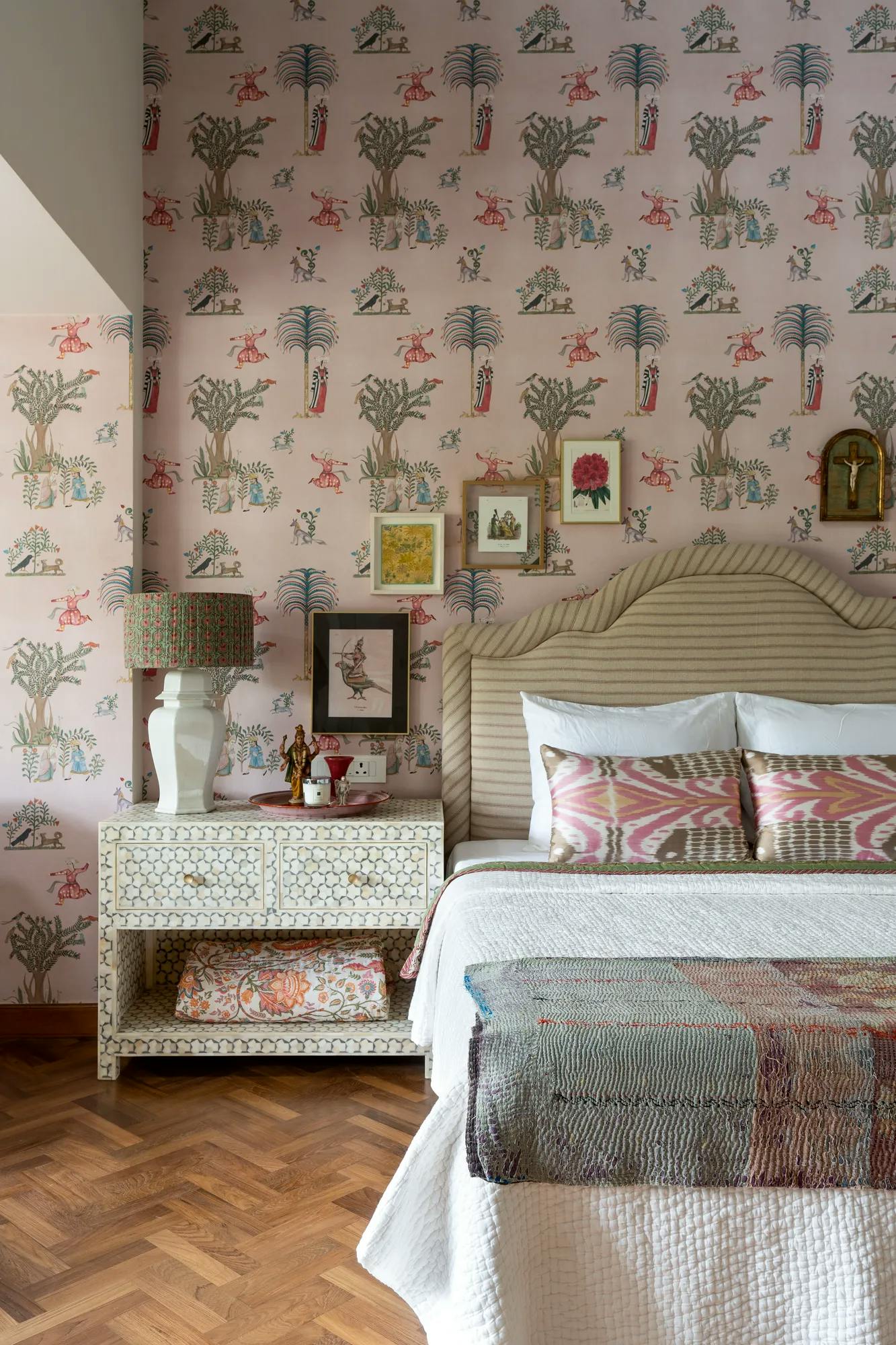
The original living room is converted into a library and held together by the Sakya carpet from the PRD x JR collection. A tweed sofa is paired with chairs upholstered in uzbek ikats and the original wooden floor was hand finished in a natural polish.
The master bedroom suite comes to life with a wallpaper inspired from an Iranian textile and custom designed in the PRD studio. The custom built bed is upholstered in kala cotton fabric from Khamir and paired with custom made bone inlay tables. A series of small format artworks mimic the arch of the bed headboard.
Scattered through the home are works of bespoke art made for Nenagh’s unique vantage points. Elements like tiles, wallpaper and even fabrics were customised inside the PRD design studio to infuse the interiors with warmth, vitality and an irresistible note of whimsy.
The hill-stations homes of the 19th century were designed to recreate the charms of the faraway English countryside on the cool slopes of the Nilgiris. At Nenagh, this original promise is overlaid with the colours, patterns and wild things specific to this corner of the blue mountain range, and the family who have made it home.
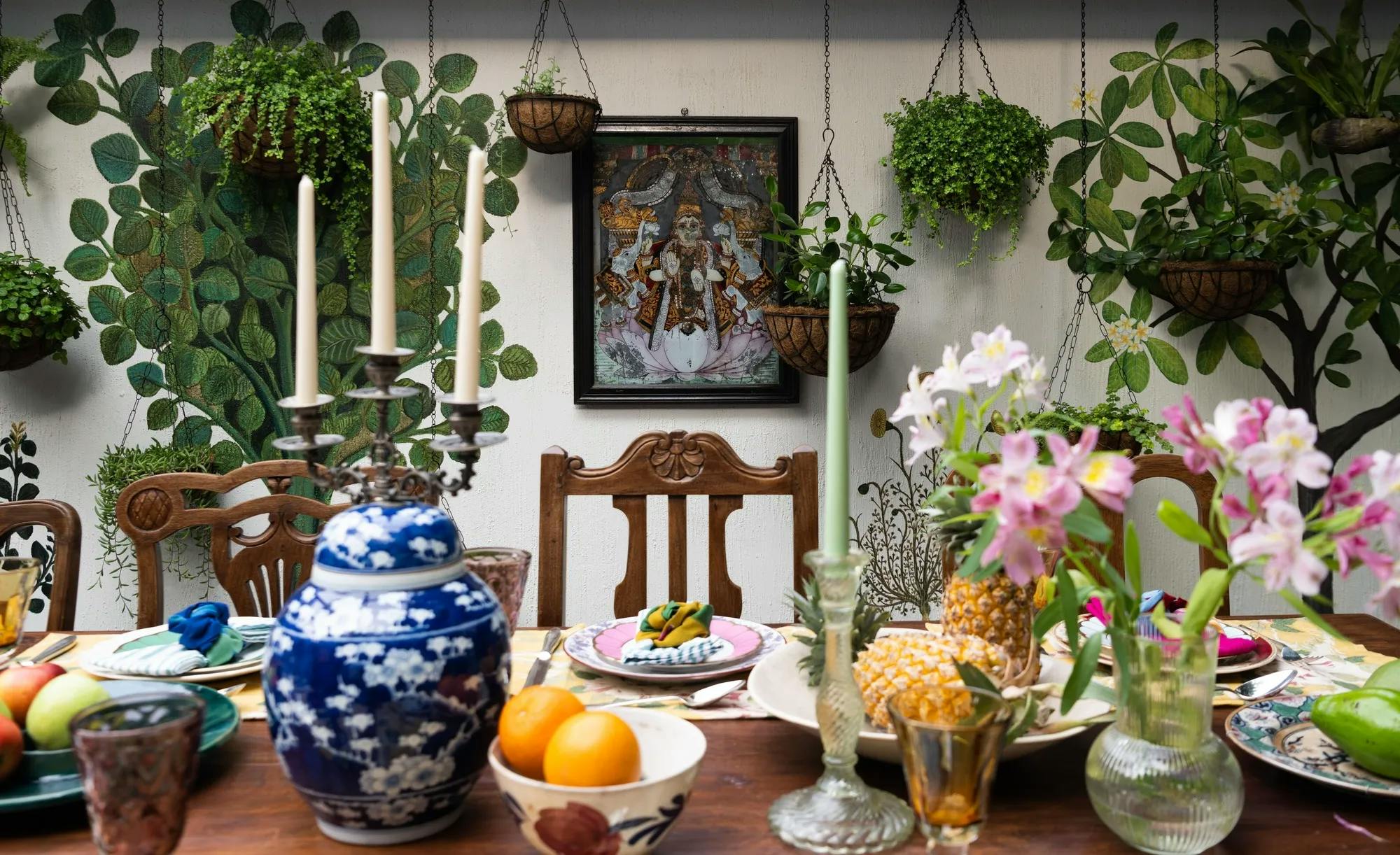
The conservatory is decorated with hand painted botanicals inspired by Indian miniatures and mysore style glass paintings.

PHOTOGRAPHY BY
Shamanth Patil & Hashim Badani